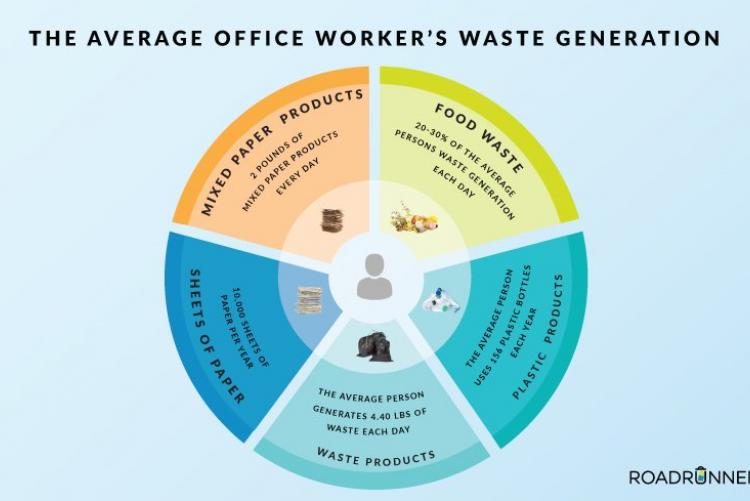If you follow us on Twitter you will see we are environmentalists, we like to share current news articles about climate change and sustainability topics. These often report on the situation at a large scale. For example; in 2019 we have had the earliest earth overshoot day on July 29th. In the U.K the population uses the resources equivalent of having 2.7 planets (Global Footprint Network National Footprint Accounts 2019). We always consider the sustainable routes of our construction projects from social, economic and environmental perspectives. Environmentally, we consider material sourcing, energy sourcing and delivery, carbon used for site travel. On top of this we are constantly using energy and materials in our small office. It can feel as though our choices are insignificant in the office, but all choices matter, and changes of all sizes can help reduce emissions and waste.
Some ideas considered for inside the office ensuring the most sustainable options for every action and material is considered. We already offset the carbon we produce from office energy, business travel & staff commuting through Clear- The Carbon Offset Company – Quality Assurance Standard for Carbon Offsetting (QAS). However, offsetting carbon still means carbon has been produced, so we consider the things we do around the office so that minimal waste and energy have been used. Sometimes the smallest changest are the helpful as they affect the things we frequently do. Small ideas for a small office;
Office Supplies
- Making subscriptions, letters, news sources from third parties paperless. Subscribing to email updates saves printing, posting and waste.
- Paperless meetings- writing notes on electronic devices.
- Recyclable sources of materials- pens, paper and saving postage miles by buying in bulk.
- Ebooks and documents.
- Ink Cartridge recycling.
- Maintenance materials – fumes from paints and cleaning products.
- Using grey-water to water plants.
Transport
- Using public transport where possible.
- E ticket use.
- Online/phone meetings.
- Webinars.
- Lift Use.
ICT
- Screen size.
- Difference in energy between laptops and desktops.
- Time taken to go on standby e.g. 10 seconds, 3 minutes, 10 minutes.
- Cloud services reducing server needs.
- Energy surges vs Maintained usage.
- Ecosia search browser to plant trees with every 17 searches.
- Recycling electronics responsibly because of the valuable materials used to make them.
Kitchen
- Food miles of products – the distance the food and packaging has travelled
- Energy and water used to make a product.
- Packaging – loose tea and coffee means less packaging is thrown away, ensuring that recyclables are clean and dry.
- Composting.
- Using measurements to not overuse products and energy e.g. the difference in boiling a full kettle of water and half a kettle to make one cup of tea.
- Re-usable cups, having reusable take out boxes/cups, glasses and cups in office, reusable cutlery, reusable shopping bags.
Lighting
- Natural lighting.
- Size of lights.
- Energy efficient bulbs (LED).
- Exterior lighting and the effects of night time pollution.
Heating and Cooling
- Electric fans and heaters are mass consumers of energy.
https://www.footprintnetwork.org/resources/data/


